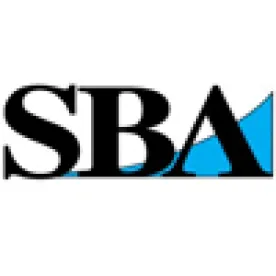The Small Business Administration (SBA) issued a new Interim Final Rule on May 18, 2020 that supplements previous SBA rules and provides additional guidance on eligibility requirements under the Paycheck Protection Program (PPP) that relate to foreign affiliates.
SBA issued this latest Interim Final Rule in response to uncertainty among PPP borrowers regarding whether PPP applicants must include employees of foreign affiliates in their total employee headcount. Early in the PPP program, many businesses assumed they did not have to include employees of foreign affiliates due to prior SBA guidance stating that an entity is eligible for a PPP loan if it has 500 or fewer employees whose principal place of residence is in the United States. SBA clarified the requirement to count employees of foreign affiliates in response to Question 44, published on May 5, 2020, in its ever-evolving Frequently Asked Questions guidance document.
The Interim Final Rule explains that the reference in SBA guidance to employees whose principal place of residence is in the United States is relevant to a PPP applicant’s calculation of payroll for purposes of determining the PPP loan amount and to the calculation of loan forgiveness. However, the fact that an applicant might be eligible for a PPP loan if it has 500 or fewer U.S. employees does not mean that the applicant is not also subject to the other requirements applicable to the PPP, including the affiliation requirements. Moving forward, new PPP loan applicants should be aware of SBA’s position that if an applicant, together with its domestic and foreign affiliates, does not meet the 500-employee or other applicable PPP size standard, it is not eligible for a PPP loan.
SBA’s guidance comes very late in the process, after the agency already has disbursed billions of dollars in PPP loans. While SBA acknowledges the confusion its guidance has created, this guidance comes too late for some borrowers that returned loan proceeds over concerns that they no longer satisfied the program requirements after the issuance of SBA guidance making clear that global headcount would be considered for purposes of loan eligibility. Because of this confusion and uncertainty, the Interim Final Rule states that SBA, as “an exercise of enforcement discretion,” will not find any borrower that applied for a PPP loan prior to May 5, 2020 to be ineligible based on the borrower’s exclusion of non-U.S. employees from the borrower’s calculation of its employee headcount if the borrower (together with its affiliates) had no more than 500 employees whose principal place of residence is in the United States. SBA will not consider such borrowers to have made an inaccurate certification of eligibility solely on that basis. SBA reminds borrowers that under no circumstances may PPP funds be used to support non-U.S. workers or operations. This guidance comes on the heels of the issuance of FAQ Response 46, issued on May 13, 2020, which also allows for enforcement discretion with regard to the PPP loan certification.
While this guidance will come as welcome news to many businesses with foreign affiliate employees that received and used PPP loans, it may serve as a point of extreme frustration for those businesses that needed the loans to survive during this crisis, but returned the money out of fear that they would face consequences for miscalculating global employee headcount and improperly certifying their loan eligibility. And while focused on employee headcount, this latest interim final rule highlights inherent limitations on the government’s ability to pursue enforcement action against the vast majority of PPP loan borrowers.
SBA Enforcement Challenges
This new Interim Final Rule exposes some of the critical problems that follow from the Coronavirus Aid, Relief, and Economic Security (CARES) Act, which was enacted quickly and then implemented in a disjointed manner through the issuance of a multitude of new and often conflicting guidance. Unfortunately, the piecemeal guidance issued by the SBA and statements made by the Secretary of the Treasury regarding audit scrutiny and enforcement liability have undercut the well-intentioned purpose of the PPP, which was to provide immediate assistance to businesses affected by the COVID-19 pandemic. Instead, companies in financial need have been reluctant to apply for or keep the PPP loans out of fear they may be subject to a future SBA enforcement action.
Businesses should take some comfort in knowing that the SBA likely will have difficulty pursuing any criminal enforcement for loans obtained based on certifications made in good faith and based on the limited SBA PPP guidance available at the time a borrower applied for a loan. Many enforcement fears relate to the False Claims Act (FCA), 31 U.S.C. §§ 3729 – 3733, which establishes liability for any person who knowingly submits a false claim to the government. To violate the FCA, however, a person must have submitted a false claim with knowledge of the falsity. Knowledge of false information is defined as actual knowledge, deliberate ignorance of the truth or falsity of the information, or reckless disregard of the truth or falsity of the information. See 31 U.S.C. § 3729(b)(1). In the present situation, where the government rapidly implemented the PPP, induced companies to apply for loans based on vague and incomplete guidance, and subsequently issued a series of continuously changing, and sometimes conflicting, fragmented rules, it will be difficult to demonstrate the intent and knowledge component of the FCA for purposes of liability. SBA concedes as much in the latest interim final rule and in its response to Question 46.
Specifically, in the most recent iteration of the SBA’s PPP Frequently Asked Questions document, SBA addressed how it will review borrowers’ required good-faith certification concerning the necessity of their loan request. SBA’s FAQ response states that a safe harbor will apply to SBA’s review of PPP loans with respect to the economic necessity issue, which means that any borrower that, together with its affiliates, received PPP loans with an original principal amount of less than $2 million will be deemed to have made the required certification concerning the necessity of the loan request in good faith. SBA has implemented this safe harbor in part because borrowers with loans below the $2 million threshold are generally less likely to have access to adequate sources of liquidity in the current economy than borrowers with larger loans. Interestingly, SBA’s guidance also expressly states that, given the large number of PPP loans, this approach to enforcement of loans within the safe harbor will enable SBA to conserve its finite audit resources and focus its reviews on larger loans, where the compliance effort may yield higher returns.
Even for those PPP loans in excess of $2 million that may face more scrutiny by the SBA, Question 46 reminds companies that if the SBA determines that a borrower lacked an adequate basis for the required economic necessity certification, SBA will seek repayment of the outstanding PPP loan balance and will inform the lender that the borrower is not eligible for loan forgiveness. If the borrower repays the loan after receiving notification from SBA, SBA will not pursue administrative enforcement or referrals to other agencies. The inherent concessions by the government of the limits of its enforcement authority should provide some measure of comfort to borrowers concerned about civil and criminal exposure arising out of the PPP.






 />i
/>i

